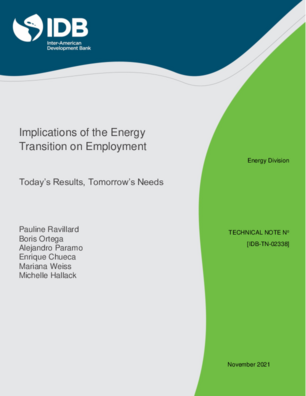Implications of the Energy Transition on Employment: Today’s Results, Tomorrow’s Needs
Date
Nov 2021
As countries progress in their energy transitions, new investments have the potential to create employment. This is crucial, as countries enter their post-pandemic recovery phase. An opportunity also arises to close the gender gap in the energy sector. However, how much will need to be invested, how many jobs will be created, and for whom, remain empirical questions. Little is also known about the needs of each country and their sectors in terms of future skills and training. The present work sheds light on these questions by carrying out a harmonized firm-level survey on employment in Chile, Uruguay, and Bolivia. Findings are manifold. First, firms in emerging sectors such as energy efficiency, electric mobility, battery, storage, hydrogen, and demand management, create more direct jobs than generation firms, including renewables. Second, these firms also have the potential to create employment that is local, permanent, and direct. Finally, they can contribute to closing the gender gap. However, this employment creation will not come on its own and will not be equal between countries. It will require improving the workforces qualifications and considering each countrys labor market and market structures specificities.




